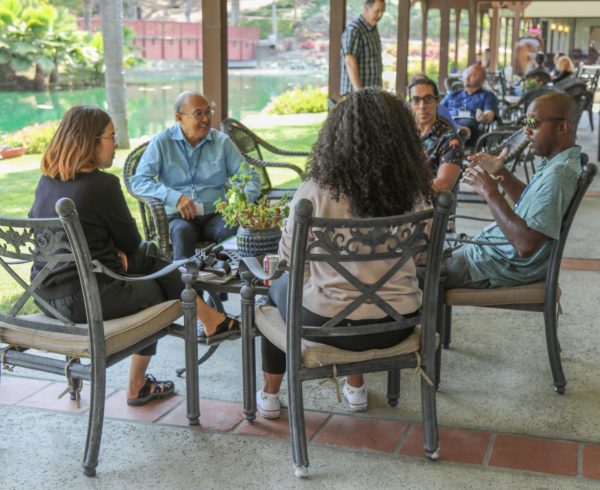It’s back!!!
Nearly a year ago, I introduced a new series titled FaithRethink. In it, I invited us to recognize that faith in Jesus and following Jesus involves and invites an ever expanding and deepening journey that involves ongoing changes. Sometimes those changes involve acknowledging our preconceived assumptions and ways we think about and view the world, our faith, our understanding of God and…well, everything else.
Recapping The Series
In the first article of the series, FaithRethink: A new series on an evolving Christian faith, I opened up and shared that I too have experienced an expanding and deepening faith as I follow the person and way of Jesus. Having talked to others like myself who have gone through (or continue to go through) an evolving faith in Jesus, these seasons and moments often include what I like to call faithrethinks—occasional invitations to stop, hit the pause button and reflect deeply on our spiritual life.
The second article, Are you the same person you used to be, picked up those concepts and experiences by inviting us into a thought experiment. We were given a choice to pick an earlier time in our lives and write down answers to specific questions about that time in our life: we answered questions about our theological/spiritual beliefs, our values and our lifestyle choices during that earlier period in our lives. We then compared that period of our lives to our present selves. We wrote down both similarities and differences. Some of these changes were slight and some were great. This thought experiment helped us to acknowledge that change is simply an important part of life. We all change. Whether or not we resist the change is what matters.
In the third article of the series, Moving beyond childhood Christianity, I shared why an evolving faith is not only inevitable and essential to life, it’s essential to all matters of life and faith in Jesus. As we get older, we are introduced to new information and that new information can become new learning if we’re open to it. We’re also introduced to new circumstances and situations. Some of these invite us to rethink old truths in a new light, old frameworks with new ones, and urge us to discover what we believe and why we believe it. They challenge us to resist living on auto pilot or maintaining the status quo.
The truth is that many people, including Christians, have to deal with various abusive circumstances throughout their lives, in their homes and in their churches. In fact, they—or rather WE–may live under those circumstances for many years and not even realize it. It’s all we know. Sometimes this abuse is even rooted in harmful beliefs and harmful church practices.
And then, one day, we are presented with a new situation that offers new information and new learning about life, and suddenly or gradually, our eyes are opened to see the abuse we are living with. As we become aware of these harmful things, it’s important, even necessary that they are named, rejected and released from our lives.
The Meaning of Jesus’ Death on a Cross
In the last article I published in the series, My evolving understanding of Jesus’ death, I introduced a particular theological topic where my thinking has expanded, deepened and become more nuanced over the last twenty years. That topic is the meaning of Jesus’ death on a cross (often referred to as the atonement).
But as often happens in life, things happen. Things like worldwide pandemics. So, I put the FaithRethink series (and with it the topic of Jesus’ atonement) on a pause and began a new series covering the pandemic to help people process through the last two years (and to process it myself). If you missed the articles on the pandemic you can begin with the first article here.
Now that the FaithRethink series is resuming, we will pick back up the topic of Jesus’ death on a cross (i.e. the atonement). In my previous blog post in that series, My evolving understanding of Jesus’ death, I raised concern about a common and popular gospel formula that many Christians believe and teach about Jesus’ crucifixion. In it, I offered a long list of questions that have been important for me over the last twenty years that helped me in my own Bible research.
In hindsight, the introductory article to the topic of Jesus’ death felt a bit unfinished. I left a lot to the imagination and probably raised more questions than I was willing to get into right away. As I considered where to take the series from there, I decided that—instead of rushing into why those questions were important to me and why or how my understanding about Jesus’ death has evolved—it might be more constructive and helpful to introduce the topic of atonement from another angle. It dawned on me that many Christians today have not had the opportunity (or privilege) as I have to research church history and the development of atonement theology by Christian thinkers from the time of the 1st century to today’s Christian church in the 21st century. Since this learning has played a critical role in my own process and the change(s) in my thinking about Jesus’ death, I thought it might serve those of you who are in a reflective place about your own view of the atonement.
As I prepared for the next article, I revisited some of the most popular and common atonement theories put forward by Christian thinkers throughout church history. It was a rewarding time, and I even learned some things I hadn’t previously known. I hope my new learning might benefit you as well.
Here’s the Atonement Series Title Line-Up from start to finish
- My evolving understanding of Jesus’ death (last year’s intro to atonement series)
- FaithRethink Series on the Atonement Returns (page you’re on now)
- 7 atonement theories from church history
- Hijacking the Biblical Story of the Atonement
- Reengaging with the Bible’s Biggest Themes
- 7 Bible Stories you think you know but don’t
- Cruciform atonement theory: How Jesus’ death on a Roman cross changes everything
- Questions and answers about the atonement







